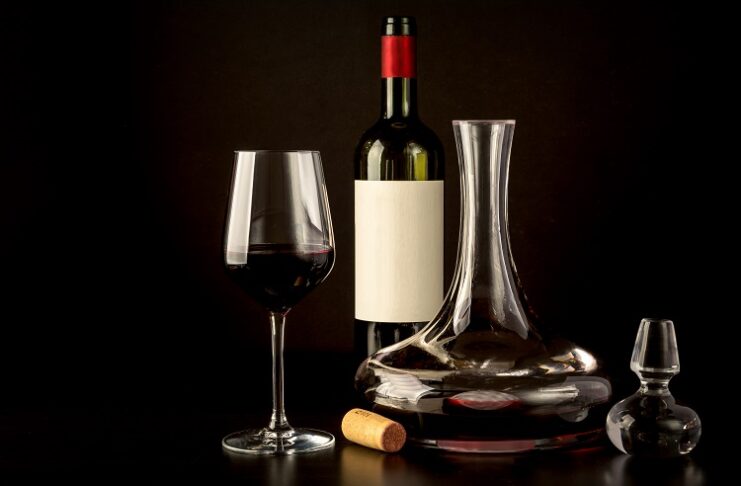I have always thought that decanting wine was a very Continental kind of thing to do. When I was younger, I didn’t understand that there is a real purpose to decanting wine. I thought that people just transferred wine from the bottle to a much nicer vessel for “show”. I later learned that, although pouring wine into a much fancier clear glass bottle is one way to impress friends and family, the main reasons do not have much to do with esthetics.
The practice of decanting wine has been around for decades. The first decanters were used for the practical purpose of separating the wine from the sediment at the bottom of the original bottle. Back then, the sediment could be considerable, especially in red wines. Sediment in the wine bottle is a gritty, sand-like substance. There’s usually nothing wrong…it can occur during fermentation or while the wine ages in the bottle. Even though it won’t harm you, it’s not the best thing to find at the bottom of your glass or in your mouth! So, what do you do about it?
You decant your wine prior to serving. I’ll share some of the guidelines for decanting wine that will help to lessen the chance of that sediment ending up in someone’s glass and then you trying to explain why they have “sludge” in their glass!
Another reason that you want to decant some wines, and possibly a more important one, is to add oxygen to the wine. Allowing the wine to “breathe” opens up the aromas and flavors in the wine and makes for a much more enjoyable tasting and drinking experience. Allowing the wine to breathe for a while can bring a smoother, more floral and fruit aroma and flavor profile to old and young red wines.
Wine Decanters. There are several styles of wine decanters available. I like to scout out decanters in vintage antique shops. They usually have unusual and interesting looking decanters. But if you want to go the more modern route, there are plenty of styles to choose from. They all should have these qualities in common: easy-pour neck, clear glass, and facilitate the aeration process.
Here are some examples:

The process of decanting wine is not something to be taken lightly. For example, you don’t want to just open a bottle of red wine and dump it into the decanter and think you’re done. So, in order to get you through the process, here is the step-by-step art of decanting wine.
- Remove your red wine from your wine rack. Hopefully you have it resting horizontally in a cool, dark place.
- Place it in an upright position (ideally for an hour) so that any sediment goes to the bottom of the bottle.
- Remove the cork from the bottle.
- Slowly pour the wine from the bottle into the decanter. The key word here is SLOWLY. You don’t want to disturb the sediment at the bottom of the bottle.
- Stop pouring once the sediment gets into the neck of the bottle. Do not let it go into the decanter.
- Allow the wine to rest and aerate in the decanter. The timeframes are listed below.
- Serve your luscious red wine and enjoy!
Decanting time guidelines
- Light-bodied red wine: Pinot Noir, Grenache, Gamay, etc.
Decant 20-30 minutes before serving.
- Medium-bodied red wine: Merlot, Sangiovese, Tempranillo, Cabernet Franc, Barbera, etc.
Decant 20-60 minutes before serving.
- Full-bodied red wine: Cabernet Sauvignon, Malbec, Petit Sirah, Zinfandel, Nebbiolo, Syrah, etc.
Decant 1-2 hours before serving.
These are only guidelines, but I believe even 15 minutes of decanting will help with the tannin harshness that may be present in some red wines. Decanting especially helps old red wines by removing the sediment that usually forms on the bottom of old bottles.

So, there you have it. Decant your red wines for an enhanced experience: no sediment, more aromatic scents, and delicious flavors. Do an experiment, pick a red wine, pour it into a glass, taste it…then, pour it into a decanter, wait, and taste. What’s different?
Leave a comment and let me know how using a decanter has changed the wine. You may have a whole new appreciation and enjoyment of red wine by using a decanter!
Cheers!

